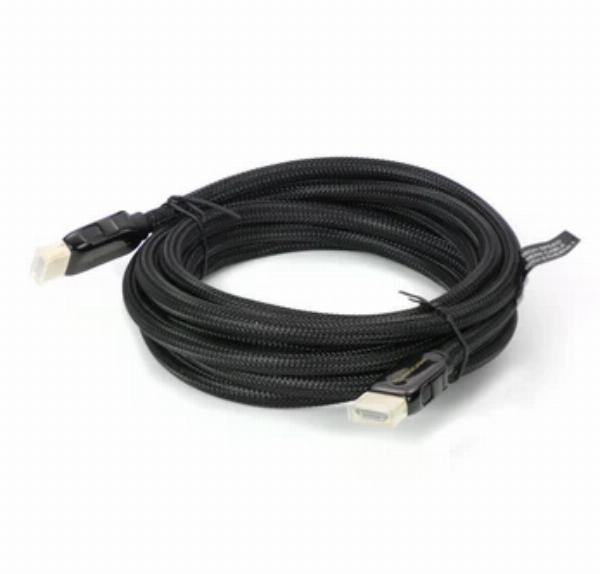HDMI Cables Explained: Types, Benefits, and Choosing the Right One

Strong 8k brings an ultra-HD IPTV experience to your living room and your pocket.
Introduction to HDMI Cables
HDMI cables have become a staple in every tech-savvy household, connecting everything from your TV to gaming consoles. But do you really understand what makes these cables so essential? Whether you're binge-watching the latest series or enjoying an immersive gaming experience, the quality of your HDMI cable can significantly impact your viewing pleasure.
As more devices adopt this technology, knowing the different types and their benefits is crucial for making informed choices. Join us as we dive into the world of HDMI cables—discover their various forms, advantages, and tips on selecting the right one for your needs!
Types of HDMI Cables
HDMI cables come in several types, each designed for specific needs. Understanding these can help you make the right choice.
Standard HDMI: This type is perfect for everyday use, supporting 1080p video and standard audio formats.
High-Speed HDMI: Ideal for more demanding tasks, it supports resolutions up to 4K and additional features like 3D and Ethernet connectivity.
Premium High-Speed HDMI: For those wanting top-notch performance, this cable maintains high-quality signals over longer distances without degradation.
Ultra High-Speed HDMI: Designed for the latest technology, it supports 8K resolution at 60Hz and advanced features such as dynamic HDR.
Mini and Micro HDMI: These are smaller versions meant for portable devices like cameras or tablets. They serve a similar purpose but fit into smaller ports.
Each type serves its unique function based on your device requirements and media consumption habits. Select wisely to enhance your viewing experience!
Benefits of Using HDMI Cables
HDMI cables offer a seamless connection between devices, ensuring high-quality audio and video transmission. This means you can enjoy your favorite movies or games with crystal-clear visuals and immersive sound.
One of the standout benefits is their ability to carry both HD video and multi-channel audio through a single cable. This not only reduces clutter but also simplifies setup processes.
Additionally, HDMI supports various resolutions, including 4K and even 8K in newer versions. With this capability, you're future-proofing your entertainment system for years to come.
Moreover, many HDMI cables support advanced features like HDR (High Dynamic Range), enhancing color depth and contrast. This leads to an overall richer viewing experience.
Most modern devices are equipped with HDMI ports—making compatibility effortless across TVs, gaming consoles, projectors, and more. Using HDMI ensures that you’re always connected without hassle.
Factors to Consider When Choosing an HDMI Cable
When choosing an HDMI cable, consider the specific requirements of your devices. Different gadgets may support varying versions of HDMI, so knowing what you need is crucial.
Length matters too. The distance between your source and display can affect signal quality. Longer cables might lead to degradation unless they are specifically designed for longer runs.
Also, pay attention to the type of content you plan to watch. If you're into 4K or HDR video, ensure that the cable supports these formats for optimal performance.
Check for certifications such as Premium High Speed or Ultra High Speed. These labels indicate that the cable has been tested for higher bandwidths and better reliability in transmitting signals without loss.
Common Misconceptions About HDMI Cables
Many people think that all HDMI cables are the same. This isn't true. There are various types designed for specific purposes, like high-speed connections or 4K video support.
Another misconception is that a more expensive HDMI cable guarantees better quality. In reality, most standard cables perform well enough for typical home use. The difference comes into play with extremely long distances or specialized applications.
Some believe they need to replace their HDMI cables frequently due to wear and tear. Generally, these cables are quite durable and can last years under normal usage.
Additionally, there's a notion that using an adapter will degrade signal quality significantly. While some adapters may affect performance slightly, many modern options provide seamless transitions without noticeable loss in quality.
Understanding these myths helps consumers make informed choices regarding their HDMI needs.
How to Properly Set Up and Use HDMI Cables
Setting up HDMI cables is straightforward, but a few tips can enhance your experience. Start by identifying the HDMI ports on your devices. Most TVs and receivers have multiple options labeled clearly.
Gently insert one end of the cable into the source device, like a Blu-ray player or gaming console. The other end goes into the TV or projector's corresponding HDMI port. Make sure it fits snugly; loose connections can lead to signal issues.
Once connected, power on both devices. Use your TV remote to select the correct input channel that corresponds with where you plugged in the HDMI cable. This step ensures that you're viewing content from your chosen device.
If audio isn’t working, check volume levels and settings on both devices. Adjust as needed for optimal sound quality without any distortion or lagging signals during playback.
Troubleshooting Common Issues with HDMI Cables
HDMI cables can sometimes be temperamental. If you're experiencing signal issues, first check the connections. Ensure both ends are securely plugged into your devices.
If you see a blank screen, try swapping out the HDMI cable with another one to rule out defects. Sometimes, simply unplugging and replugging can reset the connection. For audio problems, verify that the correct input source is selected on your TV or monitor.
It's easy to overlook this simple step. In cases of flickering images or poor resolution, inspect for any physical damage on the cable itself. Kinks or frays may affect performance.
Keep in mind that not all HDMI ports support every feature—like 4K or HDR—so double-check compatibility if you're using newer technology. Troubleshooting can save time and frustration when setting up your entertainment experience.
Where to purchase Best HDMI Cables?
When it comes to purchasing the best HDMI cables, look no further than Gadget Tree Tech Services. They offer a wide range of high-quality cables that cater to various needs and devices.
Gadget Tree prioritizes customer satisfaction. Their knowledgeable staff can guide you through the selection process, ensuring you find the perfect fit for your setup.
Whether you're searching for standard HDMI cables or specialized versions like high-speed or active optical options, they have it all. Plus, their prices are competitive without compromising on quality.
Shopping online is also user-friendly at Gadget Tree. You can browse through detailed product descriptions and specifications from the comfort of your home.
With fast shipping and excellent after-sales support, Gadget Tree Tech Services stands out as a reliable destination for all your HDMI cable needs.
Conclusion
HDMI cables have made a significant impact on how we connect our devices, offering a simple and efficient solution for transmitting audio and video signals. Understanding the different types available can help you choose the right one to meet your needs, whether you're streaming movies or gaming with friends.
The benefits of HDMI cables are numerous, from high-definition quality to support for advanced features like 4K resolution and HDR. When selecting an HDMI cable, consider factors such as length, version compatibility, and additional features that may enhance your experience.
If issues arise during use, knowing how to troubleshoot common problems will keep your entertainment running smoothly without unnecessary interruptions. For those looking to purchase top-quality HDMI cables, Gadget Tree Tech Services offers reliable options tailored to suit every need.
Choosing the right HDMI cable enhances your viewing experience significantly while simplifying connections between devices in today’s digital world. Whether it's for home theater systems or everyday streaming needs, investing in a good quality cable pays off in seamless visual enjoyment.
Note: IndiBlogHub features both user-submitted and editorial content. We do not verify third-party contributions. Read our Disclaimer and Privacy Policyfor details.







